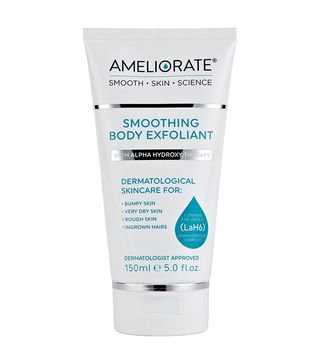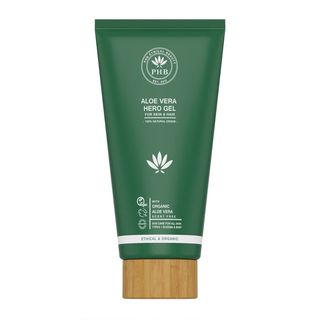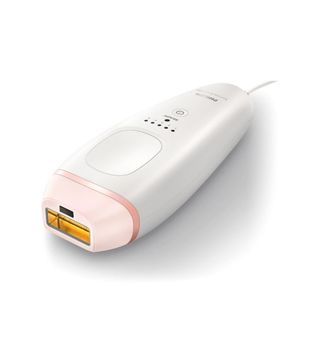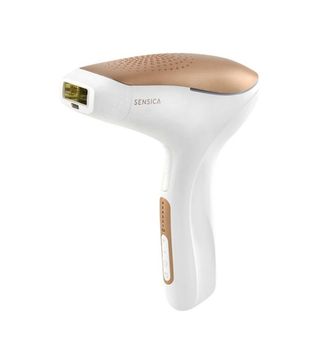Everything You Should Know About Laser Hair Removal, IPL and Electrolysis
I must admit, hair removal isn’t the most glamorous of beauty topics. The techniques are usually painful, uncomfortable, time-consuming and costly. However, with that being said, I do also believe that it is one of the most important topics to talk about openly. You see, while for me, writing about lipsticks and shampoo might be fun, it’s not necessarily life-changing content. When it comes to hair removal though, the lack of conversation around different options has many of us feeling deflated, self-conscious and feeling as though there are no real solutions.
And as a beauty editor, I am by no means exempt from this. As someone that has dark and abundant body and facial hair, I too have often felt at a loss over what to do. My sensitive skin means waxing and shaving processes are usually troublesome and irritating. And actually, with outdoor excursions limited and salons still closed for the time being, I have been taking this time out to really think about how I want to go forward with my hair removal options because, the truth is, after five years in the game, I’m still none the wiser to what is best.

One thing that I do know, however, is that I am by no means alone in this struggle. People are regularly asking me about longer-term forms of hair removal. However, despite having had laser treatments before, I am by no means an expert in this field. More permanent forms of hair removal are complex, high-tech and very costly, and, most importantly, the complex relationships that we have with our own body hair often go so deep, that I would hate to mislead anyone. So, in a bid to open up the conversation, I reached out to some of the most highly-regarded experts in the field to lay down exactly what our options are when it comes to hair removal and create a considered, balanced and brutally honest guide. Keep scrolling for everything you need to know about laser, IPL and electrolysis.
Laser

Laser is probably the most commonly referred to forms of long-term hair removal, but the term is often used interchangeably with other forms such as IPL (more on that below). However, there are fundamental differences between laser and IPL in both treatment and results, and it’s important to know these before you go ahead with treatment. "Laser hair removal is an in-clinic treatment that works by targeting laser light pulses to selectively destroy hair follicles by targeting the melanin (colour in them),” explains Lucy Dawe, Senior Consultant at Pulse Light Clinic. "The pigment in the hair follicle absorbs the laser’s light pulse, which damages the follicle enough to significantly stunt hair regrowth.”
The truth is, when it comes to laser, how the treatment is carried out will vary drastically from place to place, depending on the brand and model of device used. As a general rule however, you will need six or more treatments for long-term results. "For the Primelase devices that we use in clinic, clients need six treatments for more permanent hair removal. This is to ensure a full cycle of hair growth is eliminated. When it comes to pricing, the cost of full courses vary in different regions but we start at £135 for a course on a small area,” explains Louise Johnson from Cocoon Medical.

And yes, laser is widely regarded as the most effective, risk-free and convenient form of hair removal among experts, however there are some very important things to note, because it definitely isn’t for everyone. Mr Ernesto Azzopardi, Consultant Plastic Surgeon and laser specialist at the Cadogan Clinic says, "The closer the colour of the hair to the skin, the more difficult it becomes to treat without causing side effects. The ideal match is dark hair on fair skin because the background doesn’t provide much else the light treatment can target.”
So what does that mean for the rest of us? In order for this treatment to be effective, the hair needs to be dark, and significantly darker thank your skin if you want to avoid harm. Because of this, the treatments aren’t effective for red, blonde or grey hairs. And, while some newer lasers say that they are suitable for dark skin tones, it is still very much new territory that many experts aren’t willing to risk. "One needs to be particularly careful about treatment after becoming more tanned. Both laser and IPL have the potential to cause side effects including blistering, burns, increased or decreased pigmentation, and pain if not administered correctly,” says Azzopardi. And yes, just like every form of hair removal, laser can be painful.
Because of the above risks, experts do advise some pre-treatment prep to make things easier. First off, you must always shave and never wax prior to your appointment. In order for laser to work, the hair still needs to exist in the follicle. Gently exfoliating the area and ensuring it is well moisturised also minimises the risk of ingrown hairs that might be missed during treatment. And, most importantly, as mentioned above, tanned skin shouldn’t be treated, so you must always wear SPF to avoid tanning and never apply fake tan in the run up.
Shop Laser Prep Products
IPL

First of all, let’s clear this up: IPL is not laser. The at-home machines that you can pick up from Amazon or Boots are IPL devices, not laser. "Laser light is made up of one single wavelength and the waves travel in parallel and synchrony. However, IPL (or intense pulsed light) is normal light which passes through filters, only allowing a range of wavelengths to get through to the skin. It works through a crystal which is usually larger in surface area than a laser, allowing larger areas to be treated faster,” reveals Azzopardi.
For many reasons, IPL is becoming a less favourable in-clinic treatment. Because it is less selective in the area that it targets (making it less feasible for dark skin tones) it requires gels and more careful administration in order to prevent thermal injury and increase effectiveness. Therefore, as laser devices have become easier to use and less painful, IPL has fallen behind in both results and comfort. With that being said, it is still used in other ways. "Because it isn’t as effective as laser, IPL for hair removal is filtering out, however some IPL machines are great for skin rejuvenation treatment,” says Dawe.
So what’s the deal with at-home devices? Well, first of all, I would like to caveat that they are very expensive. However, they may be cheaper in the long run than in-clinic courses for larger areas and most do actually help to delay hair regrowth to some extent, but permanent removal is unlikely. "At-home IPL machines work by applying the administered gel to the area and then pulse the device over the area. You will not see a reduction in hair after one treatment and would require multiple treatments bi-weekly to see a satisfying result, which can be time consuming,” says Dawe. The reason for this is because the strength and effectiveness of at-home devices is considerably lower. "At-home kits do not come with goggles, which is an indicator as to how low the light technology is compared to in-clinic laser,” she adds.
Shop IPL Devices
Electrolysis

Unlike IPL and laser, electrolysis isn’t a commonly discussed form of hair removal, but that doesn’t mean it’s any less effective. In fact, it’s the most permanent form of removal. Dawe explains, "Electrolysis works by targeting an electric current to individual hairs using a metal probe which reaches down to the follicle and destroys the root.” Due to its nature, electrolysis is best suited for sparse, sporadic hairs in small areas such as the chin and abdomen, even those that are red, white or grey. "The downsides are that it can only treat fair skin types (1-3) and that it isn’t suitable for the bikini area or ‘peach fuzz’. In the clinic, we charge £225 for six treatments which take 15 minutes each and are required at two-week intervals,” she adds.
With this being said, electrolysis isn’t a treatment to be taken lightly. Whereas laser and IPL treatments are ever evolving, electrolysis is considered relatively outdated. "Electrolysis is one of the original hair removal technologies. It can leave behind physical temporary markings because of scabbing throughout the treatment recovery time. It is also quite a laborious and time-consuming treatment that is considered uncomfortable,” warns Johnson.
Next up, I saw a doctor about my summer chest breakouts—this is what she had to say.
Shannon Lawlor is a renowned beauty journalist and has contributed to Who What Wear’s beauty content since 2020. As a leading beauty editor, expert and brand consultant, she has over eight years of experience working for some of the industry’s most esteemed titles, including Who What Wear (of course), Glamour UK, Stylist, Refinery29 and Fabulous.
Having also worked behind the scenes with some of the industry’s biggest brands and retailers, Shannon has a unique insight into what people really want from their beauty routines. Understanding that beauty lovers seek honest, open and responsible advice, she has it made her mission to demystify the intimidating world of beauty, taking a no-frills approach to the most relatable topics.
While Shannon is the first to admit she doesn’t hold the answer to every beauty question out there, she is dedicated to sharing her expert insights in a bid to help. As a self-proclaimed lazy girl, Shannon has an affinity for easy-to-use, foolproof beauty products and has made it her mission to scope out the best of the best.
When she’s not working, Shannon is likely soaking in the bath or giving no-holds-barred beauty reviews on Instagram from her bathroom floor.













